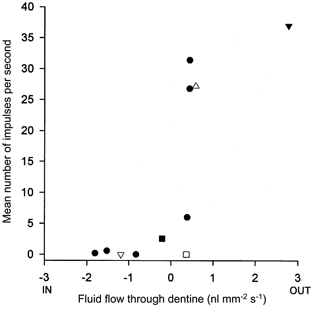Figure 9. The relationship between the mean frequency of impulses evoked in one pulpal afferent by different forms of stimulus and fluid flow through dentine.

The impulse discharge was recorded in vivo and the associated dentinal flow, from the same tooth, was recorded in vitro. The unit is the same as that shown in Fig. 7. The flow data are the mean flows during the periods of stimulation. The stimuli were as follows: Ringer solution at 55°C (▿); Ringer solution at 5°C (▾); 4 mol l−1 dextrose solution (□); hydrostatic pressure in the range ± 200 to ± 400 mmHg in steps of 100 mmHg (•); mechanical stimulation of exposed dentine (▵); and drying of the dentine surface with an air stream (▵).
